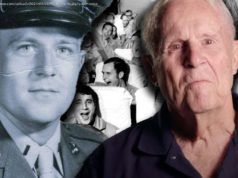What’s the transmission risk inside a car? An airflow study offers some insight for passengers and drivers alike.
Over the past year, as the health authorities have tried to curb the Covid-19 pandemic, researchers have trained their scientific attention on a variety of potentially risky environments: places where large groups of people gather and the novel coronavirus has ample opportunity to spread. They have swabbed surfaces on cruise ships, tracked case numbers in gyms, sampled ventilation units in hospitals, mapped seating arrangements in restaurants and modeled boarding procedures in airplanes. They have paid less attention to another everyday environment: the car. A typical car, of course, does not carry nearly enough people to host a traditional super-spreader event. But cars come with risks of their own; they are small, tightly sealed spaces that make social distancing impossible and trap the tiny, airborne particles, or aerosols, that can transmit the coronavirus. “Even if you’re wearing a face covering, you still get tiny aerosols that are released every time you breathe,” said Varghese Mathai, a physicist at the University of Massachusetts, Amherst. “And if it’s a confined cabin, then you keep releasing these tiny particles, and they naturally would build up over time.” In a new study, Dr. Mathai and three colleagues at Brown University — Asimanshu Das, Jeffrey Bailey and Kenneth Breuer — used computer simulations to map how virus-laden airborne particles might flow through the inside of a car. Their results, published in early January in Science Advances, suggest that opening certain windows can create air currents that could help keep both riders and drivers safe from infectious diseases like Covid-19. To conduct the study, the research team employed what are known as computational fluid dynamic simulations. Engineers commonly use these kinds of computer simulations, which model how gases or liquids move, to create racecars with lower drag, for instance, or airplanes with better lift. The team simulated a car loosely based on a Toyota Prius driving at 50 miles per hour, with two occupants: a driver in the front left seat and a single passenger in the back right, a seating arrangement that is common in taxis and ride shares and that maximizes social distancing.






